Passion for sailing and photography often goes hand in hand, creating a unique synergy that captures the essence of the open sea and its majestic vessels. Whether you’re a seasoned photographer or just dipping your toes into the world of visual storytelling, mastering the art of sea and sailing photography can elevate your creations to new heights. From perfecting camera settings to exploring innovative composition techniques, this guide delves into the secrets behind capturing stunning seascapes and sailing vessels. Learn how to harness light, experiment with angles, and refine your editing skills to bring your maritime subjects to life. With expert tips and practical advice, you’ll discover how to transform ordinary snapshots into extraordinary works of art that resonate with viewers and tell compelling stories.
Key Takeaways
- Capture the magic of golden hours for soft lighting and dramatic silhouettes in your sailing photography.
- Use leading lines like the mast or horizon to guide the eye and add depth to your compositions.
- Play with aperture settings to isolate subjects and create a blurred, artistic background.
- Practice panning to freeze dynamic movement and capture the essence of sailing vessels in motion.
- Enhance your photos by incorporating the surrounding environment, such as ocean waves or coastal landscapes.
- Fine-tune your white balance to achieve the perfect mood-enhancing colors for each scene.
- Zoom in on unique details of ships, like rigging or waves, to add visual interest.
- Always use a tripod for sharp, stable shots, especially when dealing with dynamic or low-light conditions.
- Utilize gear like polarizing filters to reduce glare and enhance reflections in your photos.
- Refine your work with thoughtful post-processing to bring out the best in your images.
- Get creative by shooting from unique angles, such as from the bow or a higher vantage point, to capture fresh perspectives.
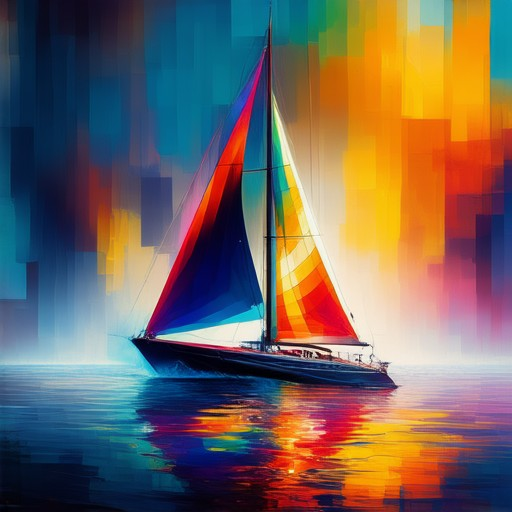
What Are the Best Tips for Taking Stunning Photos of the Sea and Sailing Vessels?
- Choose the Right Time of Day: Capture the sea during golden hours—sunrise or sunset—for soft, warm lighting that enhances colors and textures. These times also create dramatic silhouettes for sailing vessels.
- Composition is Key: Use leading lines (like the mast of a sailboat) to guide the viewer’s eye toward the horizon. Experiment with symmetry and balance by mirroring the vessel in the water or framing it between land and sky.
- Focus on Details: Pay attention to small elements like waves, foam, or the rigging. Zoom in to highlight texture and movement, making the photo more engaging.
- Use Filters Wisely: A polarizing filter can reduce glare and enhance color contrasts. A neutral density (ND) filter helps control light exposure, allowing you to capture scenes with a wide dynamic range.
- Experiment with Angles: Don’t always shoot straight on. Try low-angle shots to emphasize the scale of the vessel or capture unique perspectives from the bow or stern.
- Capture Reflections: Look for reflections of the sun, boats, or the surrounding landscape on the water’s surface. These reflections can add depth and interest to your photos.
- Stay Patient and Observant: Wait for the perfect moment when the light and conditions align. Sometimes, the most stunning photos happen unexpectedly, like a fleeting rainbow or a dramatic cloud formation.
- Edit Thoughtfully: Use editing software to adjust colors, contrast, and exposure. Remove unwanted objects or people from the frame to keep the focus on the subject.
- Explore Different Perspectives: Get out of the boat and shoot from the water level or climb a nearby vantage point. This change in perspective can offer fresh and exciting viewpoints.
By following these tips, you can create stunning photos that capture the essence of the sea and its majestic vessels. Remember to share your creations with fellow enthusiasts and enter them into competitions like the Sailing Photo Awards for a chance to showcase your work!
Best Tips for Capturing Stunning Photos of the Sea and Sailing Vessels
Capturing stunning photos of the sea and sailing vessels requires a combination of creativity, technical skills, and understanding of the environment. Here are some expert tips to help you get the most out of your photography:
- Choose the Right Time of Day : The sea often looks its best during golden hours—sunrise and sunset—when the light is soft and creates dramatic shadows. These times also offer unique color palettes for your photos.
- Frame the Scene Effectively : Use leading lines, such as the horizon or the mast of a ship, to guide the viewer’s eye and create a sense of movement and depth in your shots.
- Experiment with Aperture and Depth : Try using a smaller aperture to blur the background and isolate your subject, whether it’s a ship or a wave. This technique helps draw attention to the foreground elements.
- Pan or Track Moving Subjects : Ships and waves are often in motion. Practice panning to capture smooth motion, or use a slow shutter speed to emphasize the movement of the vessel against the static background.
- Include the Environment : Don’t just focus on the ship; consider the surrounding elements like the ocean, cliffs, or harbors. Including these adds context and scale to your photos.
- Adjust Color Timing : Pay attention to the color of the light. Adjust your white balance to match the mood of the scene—for example, warm tones during sunset or cool tones under bright sunlight.
- Focus on Details : Zoom in on unique features of the ship, such as its rigging or the texture of the waves. Ensure your main subject is sharp while allowing the background to contribute to the atmosphere.
- Use a Tripod for Stability : A tripod is essential for keeping your camera steady, especially when dealing with long exposures or low-light conditions. It ensures your photos are sharp and well-defined.
- Consider Gear Accessories : Use a polarizing filter to reduce glare and enhance reflections on the water surface. This can significantly improve the overall quality of your photos.
- Post-Process Thoughtfully : After capturing your shots, adjust the exposure, contrast, and color balance to bring out the best in your images. Remove reflections or distractions from the background to finalize your masterpiece.
By following these tips, you can create stunning photos that capture the essence of the sea and its majestic vessels. Remember to explore different angles and experiment with styles to find your unique approach to sailing photography.
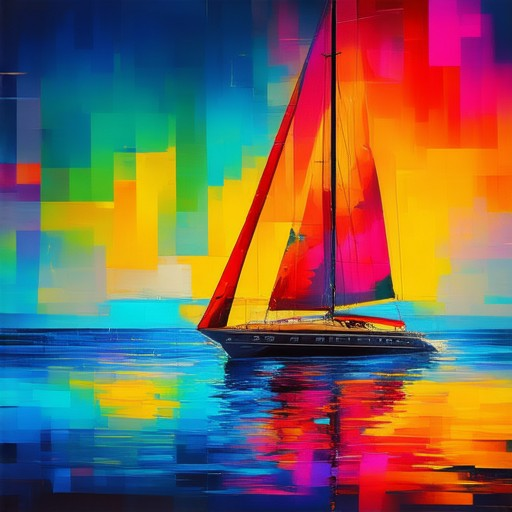
What Are the Top Tips for Capturing Stunning Photos of the Sea and Sailing Vessels?
Capturing stunning photos of the sea and sailing vessels requires a combination of technical expertise and artistic vision. Here are some expert tips to help you get the most out of your marine photography:
- Golden Hour Lighting:** The golden hours, typically one hour after sunrise and one hour before sunset, offer soft, diffused light that enhances textures and creates dramatic silhouettes. These moments are perfect for capturing the romance of sailing vessels under a glowing sky.
- Explore Unique Angles:** Don’t stick to the usual shots. Experiment with low-angle shots that emphasize the grandeur of the vessel or capture the reflection of the sun on the water. Consider shooting from the bow, deck, or even a nearby island for added perspective.
- Use a Sturdy Tripod:** A tripod ensures stability, especially in windy conditions, allowing you to focus on composition and depth of field. This is crucial for long exposures or capturing smooth movements of the vessel against the backdrop of the sea.
- Experiment with Aperture and Shutter Speed:** Play around with aperture settings to blur the waves and create a sense of motion. Use faster shutter speeds to freeze the action of the sails or the vessel moving through the water.
- Consider the Reflections:** Reflective surfaces on the water can mirror the vessel and create striking compositions. Look for reflections of the boat, its rigging, or even the sky and clouds above.
- Focus on the Horizon:** The horizon can add depth and scale to your photos. Use a wide-angle lens to capture the vastness of the sea and the tiny figures of sailors or the vessel moving towards the horizon.
- Capture the Mood of the Moment:** Pay attention to the atmosphere. Whether it’s the serene calm before sunset or the energetic activity during peak sailing hours, let your photos tell the story of the moment.
- Use Polarizing Filters:** Polarizing filters can help reduce glare from the sun and enhance the colors of the sea and sails. They’re particularly useful when the sun is low in the sky during the golden hours.
- Edit Thoughtfully:** Post-processing can enhance your photos. Adjust for color balance, contrast, and sharpness to bring out the details of the vessel and the surrounding environment. However, always aim to keep the photo as natural as possible.

Best Tips for Capturing Stunning Photos of the Sea and Sailing Vessels
Capturing stunning photos of the sea and sailing vessels requires a combination of creativity, technical skills, and understanding of the environment. Here are some expert tips to help you get the most out of your photography:
- Choose the Right Time of Day : The sea often looks its best during golden hours—sunrise and sunset—when the light is soft and creates dramatic shadows. These times also offer unique color palettes for your photos.
- Frame the Scene Effectively : Use leading lines, such as the horizon or the mast of a ship, to guide the viewer’s eye and create a sense of movement and depth in your shots.
- Experiment with Aperture and Depth : Try using a smaller aperture to blur the background and isolate your subject, whether it’s a ship or a wave. This technique helps draw attention to the foreground elements.
- Pan or Track Moving Subjects : Ships and waves are often in motion. Practice panning to capture smooth motion, or use a slow shutter speed to emphasize the movement of the vessel against the static background.
- Include the Environment : Don’t just focus on the ship; consider the surrounding elements like the ocean, cliffs, or harbors. Including these adds context and scale to your photos.
- Adjust Color Timing : Pay attention to the color of the light. Adjust your white balance to match the mood of the scene—for example, warm tones during sunset or cool tones under bright sunlight.
- Focus on Details : Zoom in on unique features of the ship, such as its rigging or the texture of the waves. Ensure your main subject is sharp while allowing the background to contribute to the atmosphere.
- Use a Tripod for Stability : A tripod is essential for keeping your camera steady, especially when dealing with long exposures or low-light conditions. It ensures your photos are sharp and well-defined.
- Consider Gear Accessories : Use a polarizing filter to reduce glare and enhance reflections on the water surface. This can significantly improve the overall quality of your photos.
- Post-Process Thoughtfully : After capturing your shots, adjust the exposure, contrast, and color balance to bring out the best in your images. Remove reflections or distractions from the background to finalize your masterpiece.
By following these tips, you can create stunning photos that capture the essence of the sea and its majestic vessels. Remember to explore different angles and experiment with styles to find your unique approach to sailing photography.
What Are the Best Tips for Taking Stunning Photos of the Sea and Sailing Vessels?
- Choose the Right Time of Day: Capture the sea during golden hours—sunrise or sunset—for soft, warm lighting that enhances colors and textures. These times also create dramatic silhouettes for sailing vessels.
- Composition is Key: Use leading lines (like the mast of a sailboat) to guide the viewer’s eye toward the horizon. Experiment with symmetry and balance by mirroring the vessel in the water or framing it between land and sky.
- Focus on Details: Pay attention to small elements like waves, foam, or the rigging. Zoom in to highlight texture and movement, making the photo more engaging.
- Use Filters Wisely: A polarizing filter can reduce glare and enhance color contrasts. A neutral density (ND) filter helps control light exposure, allowing you to capture scenes with a wide dynamic range.
- Experiment with Angles: Don’t always shoot straight on. Try low-angle shots to emphasize the scale of the vessel or capture unique perspectives from the bow or stern.
- Capture Reflections: Look for reflections of the sun, boats, or the surrounding landscape on the water’s surface. These reflections can add depth and interest to your photos.
- Stay Patient and Observant: Wait for the perfect moment when the light and conditions align. Sometimes, the most stunning photos happen unexpectedly, like a fleeting rainbow or a dramatic cloud formation.
- Edit Thoughtfully: Use editing software to adjust colors, contrast, and exposure. Remove unwanted objects or people from the frame to keep the focus on the subject.
- Explore Different Perspectives: Get out of the boat and shoot from the water level or climb a nearby vantage point. This change in perspective can offer fresh and exciting viewpoints.
By following these tips, you can create stunning photos that capture the essence of the sea and its majestic vessels. Remember to share your creations with fellow enthusiasts and enter them into competitions like the Sailing Photo Awards for a chance to showcase your work!
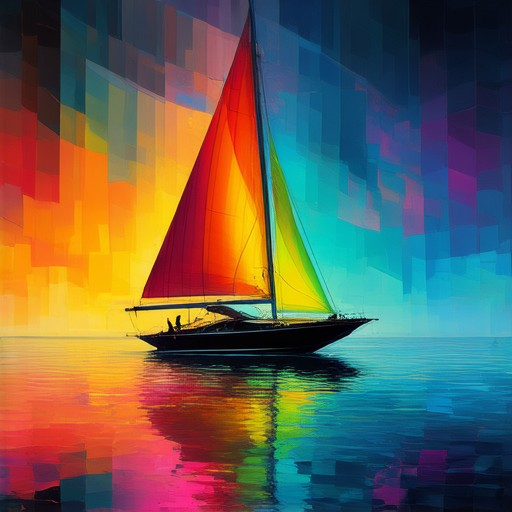
How to Capture Stunning Photos of the Sea and Sailing Vessels
To capture stunning photos of the sea and sailing vessels, consider the following expert tips:
- Lighting : Opt for soft, diffused light during the golden hour for warm tones and avoid harsh sunlight to prevent glare. This enhances the atmosphere and details of the scene.
- Composition : Utilize leading lines such as the masts of sailboats or the horizon to guide the viewer’s eye. Incorporate symmetry, especially with reflections of boats on the water for a serene effect.
- Aperture : Use a medium aperture to balance depth and focus, allowing the background to blur subtly while keeping the foreground sharp.
- Panning : Employ dynamic panning techniques by moving the camera horizontally to capture the motion of vessels and waves, adding a sense of movement to your photos.
- Color Enhancement : Post-process your photos to boost saturation and vibrancy. Adjust hues to make the sky and ocean pop, while maintaining natural colors.
- Timing : Capture photos during early mornings or sunsets for softer light and dramatic skies, avoiding peak hours for fewer interruptions.
- Vessel Interaction : Focus on the movement of sailing vessels, such as the spray from the bow or wakes, and the unique shapes of sails against the sky, especially during sunsets.
- Vantage Point : Choose elevated positions like ship decks or cliffs for broader views and perspective. Consider the type of vessel, whether a tall ship or modern yacht, to add variety.
- Stability : Use a tripod for stability, especially when capturing dynamic movements or long exposures.
- Post-Processing : Apply filters to enhance contrast and color, and consider subtle vignettes to highlight your main subject.
By integrating these strategies, you can create captivating photos that showcase the beauty of the sea and the elegance of sailing vessels.
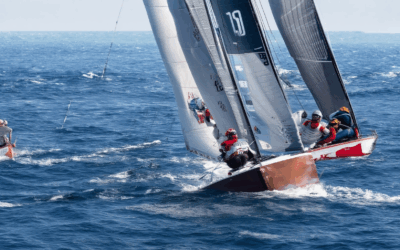
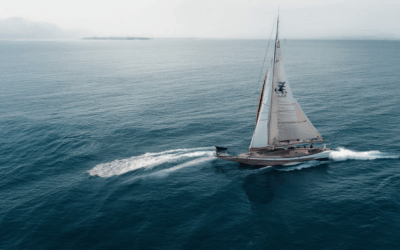
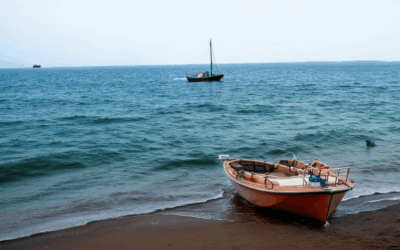
0 Comments